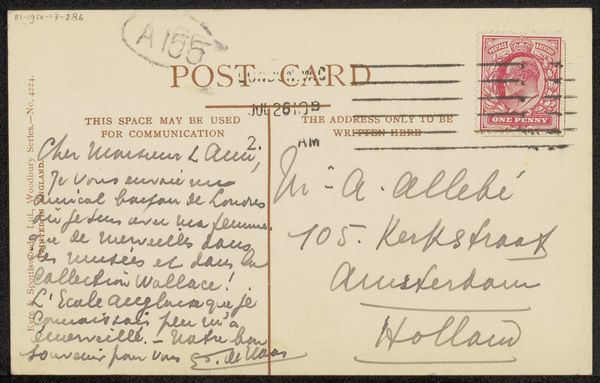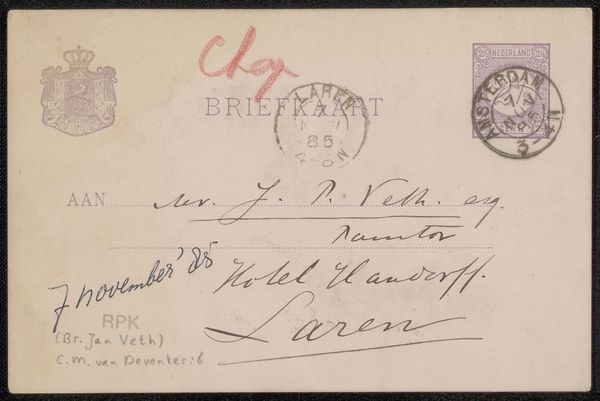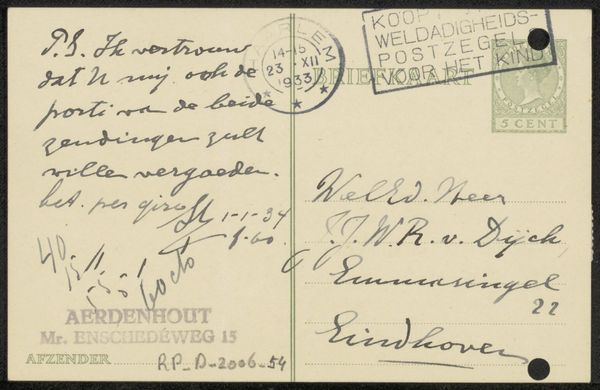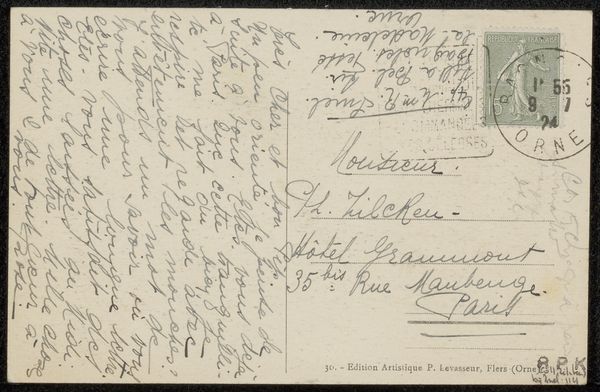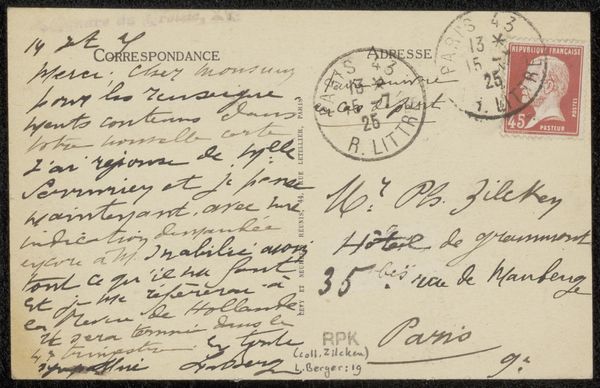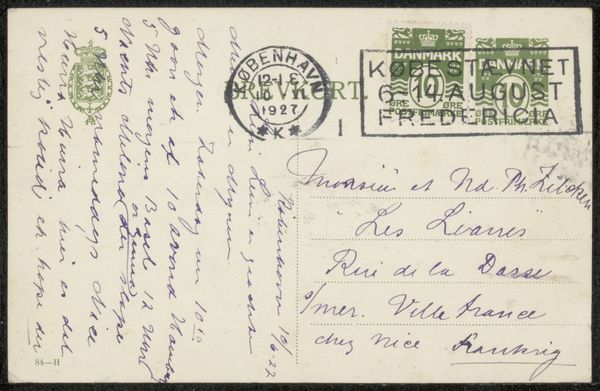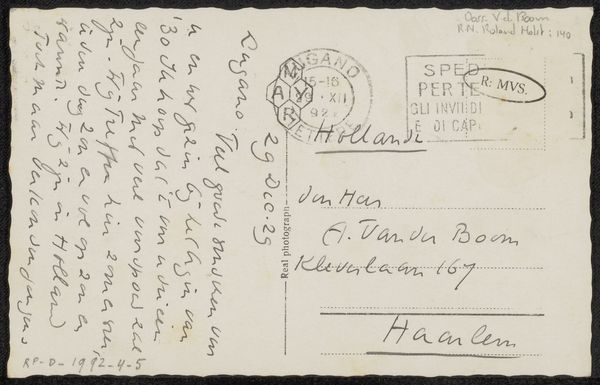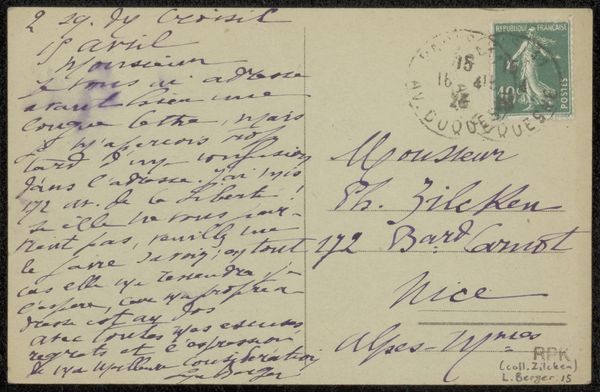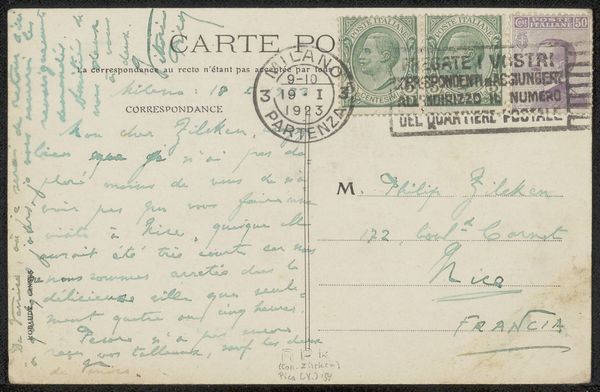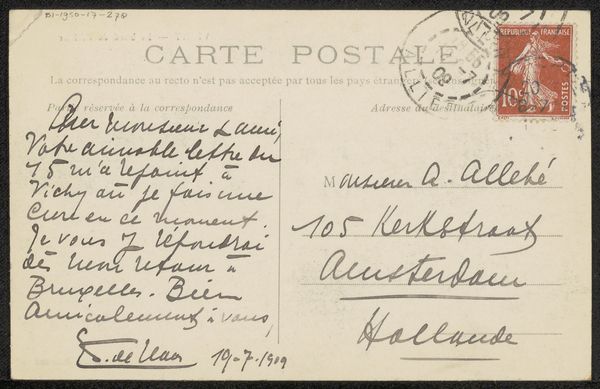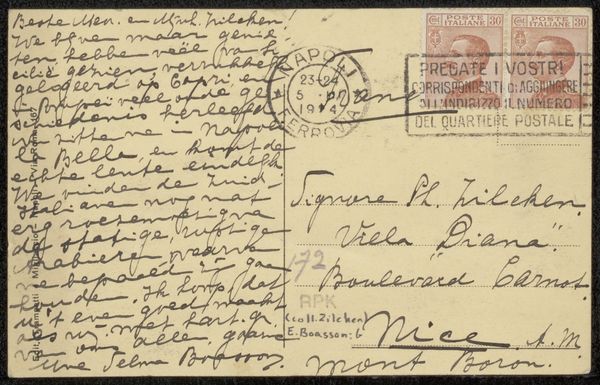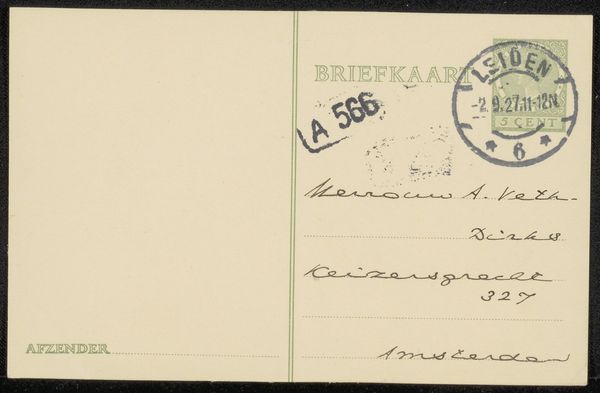
drawing, pen
#
drawing
#
comic strip sketch
#
script typography
#
hand-lettering
#
hand drawn type
#
hand lettering
#
personal sketchbook
#
hand-drawn typeface
#
pen work
#
sketchbook drawing
#
pen
#
handwritten font
#
calligraphy
Copyright: Rijks Museum: Open Domain
Editor: Here we have Cornelis Hofstede de Groot's "Briefkaart aan Jan Veth," which was created sometime between 1874 and 1925 using pen and ink. It's basically a postcard; the handwritten note gives it such an intimate feel. It's so interesting to see someone’s actual handwriting! What stands out to you? Curator: What’s compelling to me is the convergence of the public and the private. This "Briefkaart" leverages the postal system—a quintessential public utility—to deliver a message of an undoubtedly personal nature. Consider how the development of postal systems reshaped social networks and artistic communities in the late 19th and early 20th centuries. The seemingly simple act of sending a postcard reflects a complex interplay of technological advancements, evolving social practices, and the democratization of communication. Editor: So it's more than just a casual note; it’s kind of symbolic of societal shifts? Curator: Precisely! And note the implicit social hierarchies at play. The careful address, including titles, points to a formal relationship between Hofstede de Groot and Jan Veth, adhering to societal conventions of address and respect. It highlights how even informal communication channels are still subject to societal etiquette and power dynamics. Do you think that this has impacted the ways art history developed? Editor: Wow, I hadn't thought about it that way. The postcard almost becomes a historical artifact, showcasing the social norms of communication and the dynamics of the art world. Curator: Indeed. This seemingly mundane object serves as a valuable piece of social and cultural history. By studying it, we gain insight into not just the individual relationship, but the broader context of artistic networks and social expectations. Editor: I guess every piece of art can reveal a little more about what used to matter most to us. Thanks for broadening my view! Curator: My pleasure! Examining these kinds of social documents allows us to create a rich understanding of art history.
Comments
No comments
Be the first to comment and join the conversation on the ultimate creative platform.

